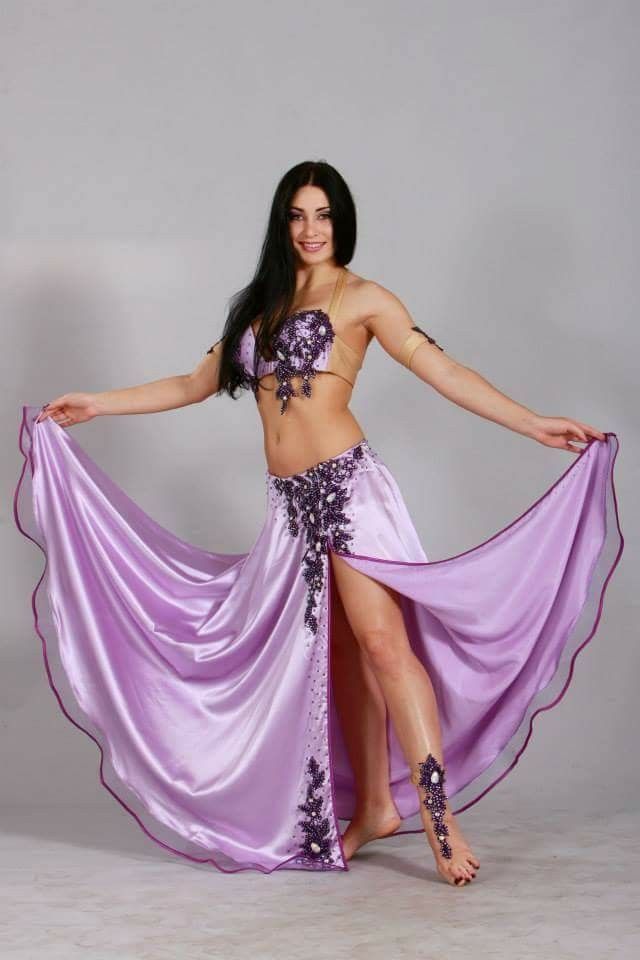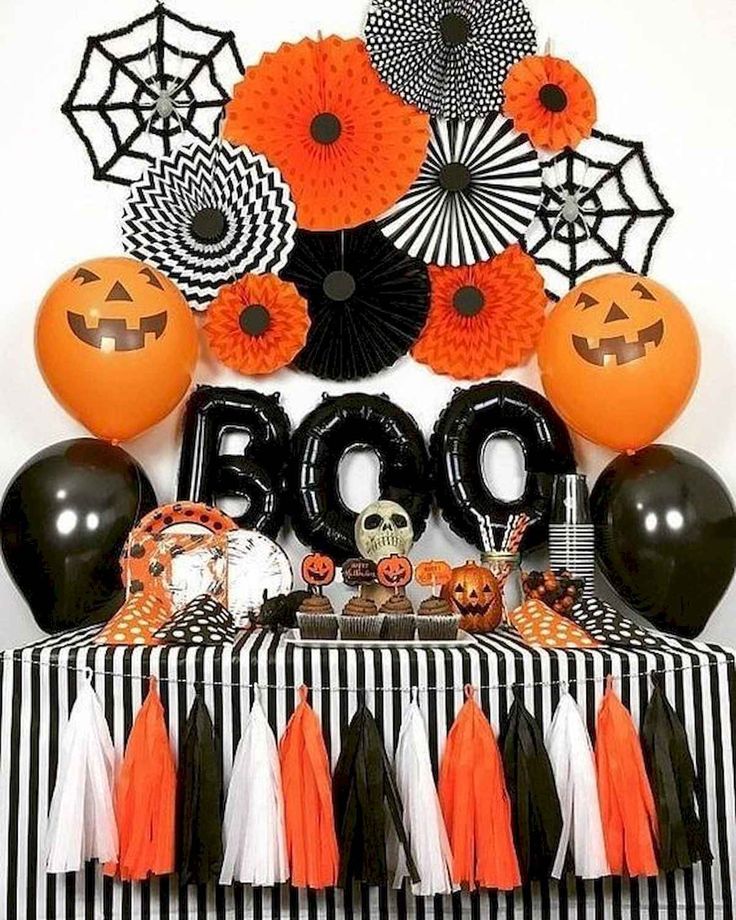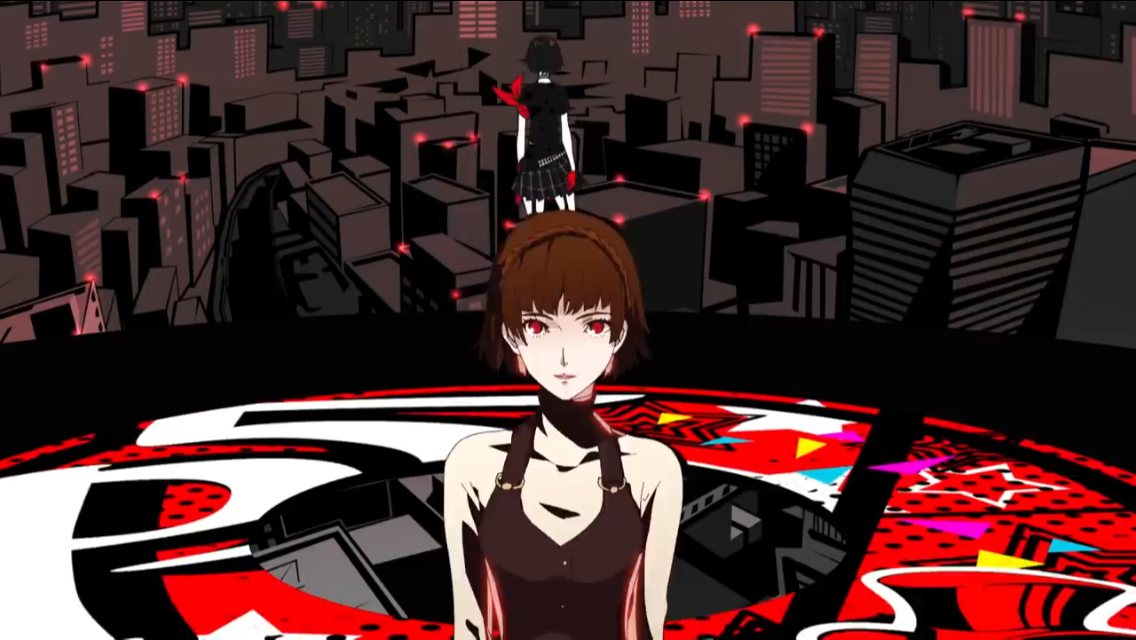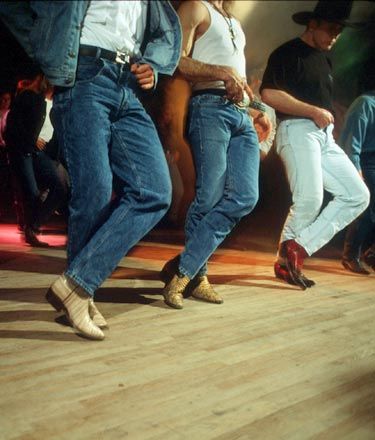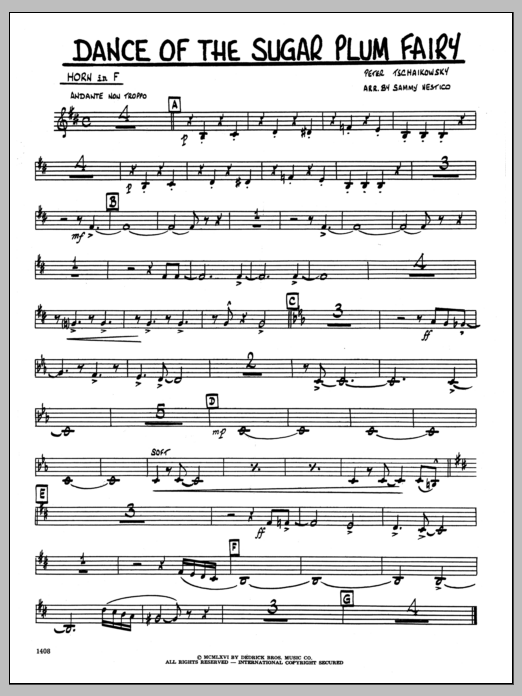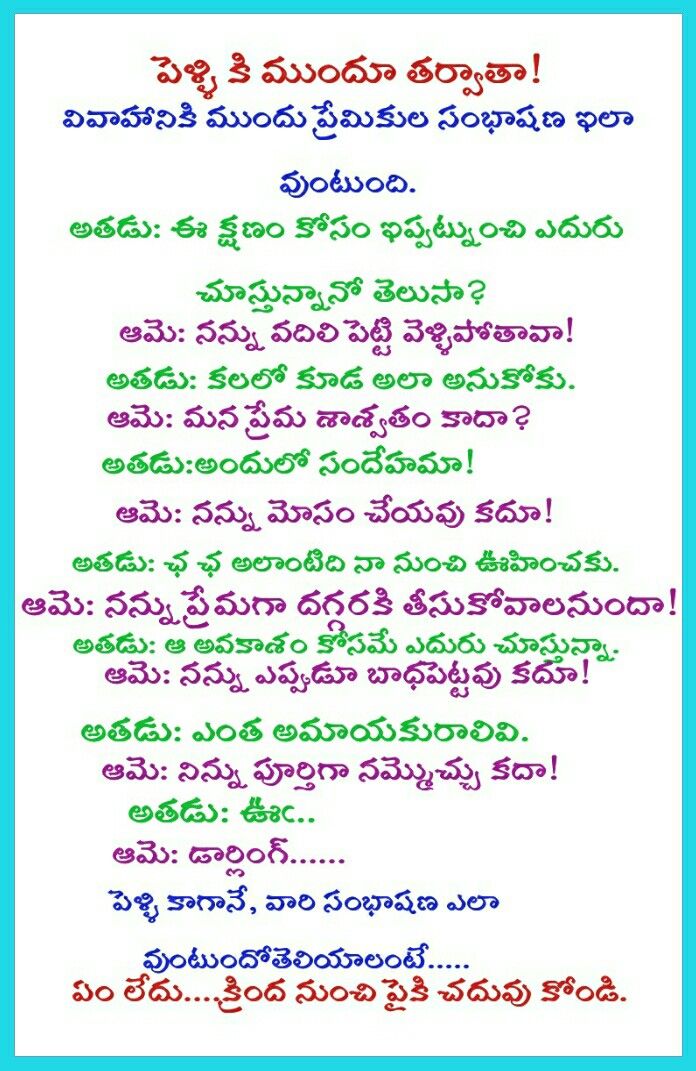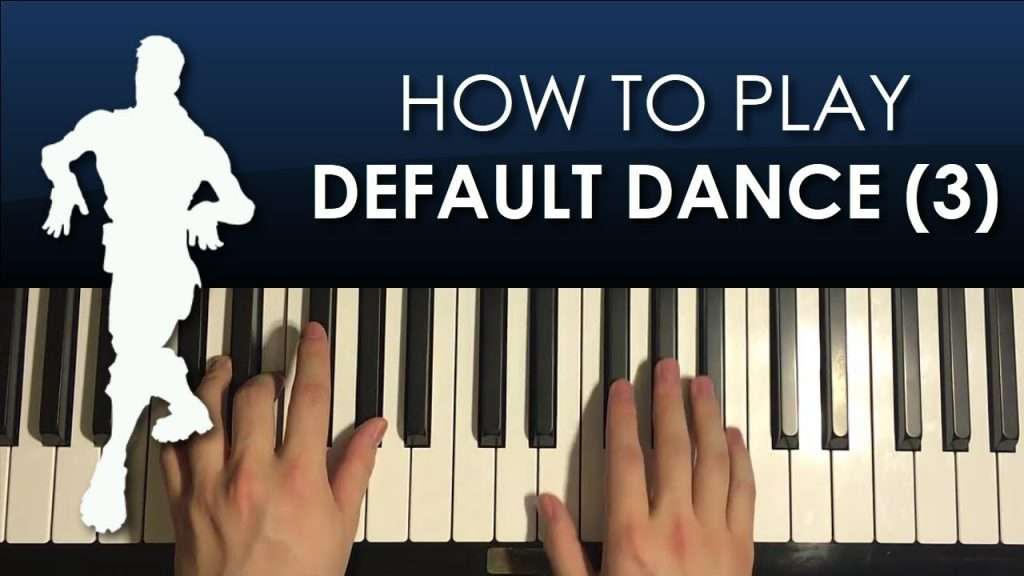How to get light dance
How to Make Your Dancing Lighter and Breezier
Lightness is the famously elusive quality that can make a dancer seem to float on air. But as with all things dance, what looks like pure ease onstage takes an incredible amount of effort behind the scenes. “It’s the proverbial carrot that I dangle for my patients,” says Melissa Buffer, a Boston-area physical therapist who works with dancers and other performing artists. “I tell them we’re doing all these exercises and all this work, but the cumulative effect will be that aesthetic quality of lightness.”
Whether you’re striving for a fast-on-your-feet, high-jumping version or its ethereal, arm-wafting sister, we’ve gathered tips and tricks to help you achieve this mysterious but prized quality.
Explore Contrast
Keep in mind that this quality is in many ways an illusion. After all, lightness only looks light when it’s contrasted with heaviness. “If you’re just doing lightness, the audience isn’t seeing lightness,” says Elizabeth Wright, a principal dancer with the Isadora Duncan Dance Company who’s on faculty at the South Carolina Governor’s School for the Arts and Humanities. She adds that Duncan, whose name is often used as synonymous with lightness, was a master of showing that contrast. “Her dances go back and forth between heavy and light, and that makes both extremes more visible,” says Wright.
Stay Grounded
For Xiomara Reyes, the professional training division head at The Washington School of Ballet, the key to this sense of contrast is being grounded. “If you want to fly, there’s a place you need to push from,” she says. “That’s part of the groundedness, to not be stuck but have that easiness to go to what’s next.”
Wright thinks of this in terms of oppositional energy. She works with her students on falls and weighted movements to help them experience the downward pull of gravity. “Once you find the strength in the legs and in the core and in the back, and that’s all coordinated, then you can lift up and move into lightness,” she says. “If you start with lightness, it’s then very hard to find that strength. ”
”
Mena Brunette, courtesy Washington School of Ballet
Strong Arms Are Light Arms
Imagine that your body is an orchestra. “The lower body tends to be more of the rhythm section,” says Wright, “and the upper body is more of the melody.” Somewhat counterintuitively, the way to achieve that melodious quality is actually through strength.
“Some dancers have this misunderstanding that strength training for the arms will make you look bulky,” says Buffer. “But arm positioning, holding their carriage correctly with endurance and without compensation, comes from better strength and control.” Buffer recommends regular old push-ups or other weight-bearing exercises to aid shoulder stability, strength and awareness. “This will manifest in a lighter arm and a lighter hand,” she adds.
Once you have the freedom to hold your arms up with ease, Reyes relies on softening the elbow as you exhale during preparations to create a sense of lightness.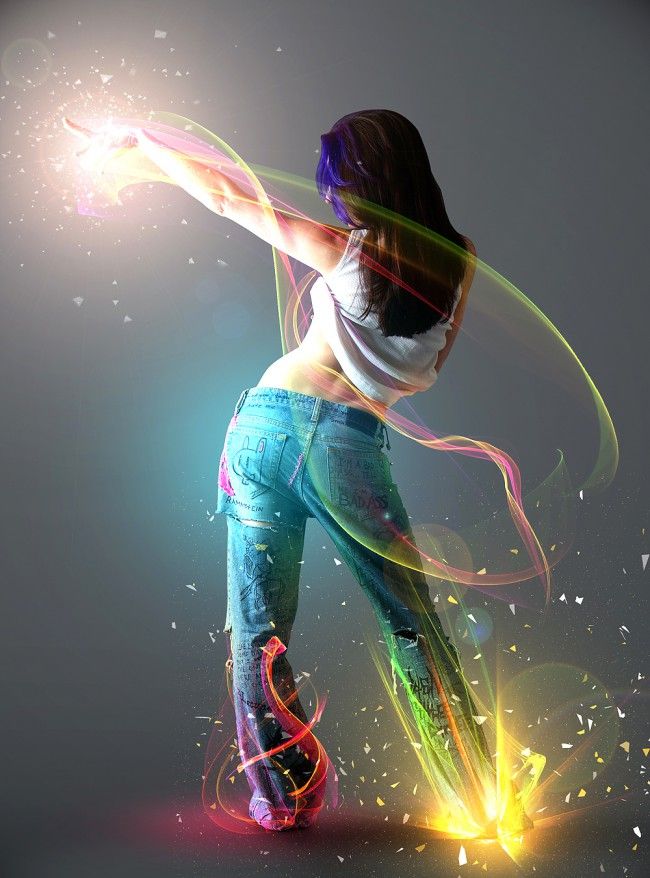 “Your port de bras should lead from the elbow,” she says, adding that this achieves a look of the whole body being synchronously in motion rather than the arms moving on their own.
“Your port de bras should lead from the elbow,” she says, adding that this achieves a look of the whole body being synchronously in motion rather than the arms moving on their own.
Learn to Float
One of the main areas where dancers strive for a sense of lightness is jumping. Although this quality looks like it’s achieved from jumping higher, Reyes believes it’s actually more about creating the appearance of staying in the air for longer. She helps her students achieve this seemingly impossible goal by telling them to coordinate the breath with the jump: inhaling while jumping, holding for a moment in the air, and then exhaling while landing. “Have a clear picture in mind of the position that you want to hit, and then take a little breath in that position, like someone’s taking a picture
of you,” she says, adding that a soft landing utilizing plié and
not immediately dropping the arms on touchdown are also key.
Buffer sometimes has dancers hold small weights and try jumping.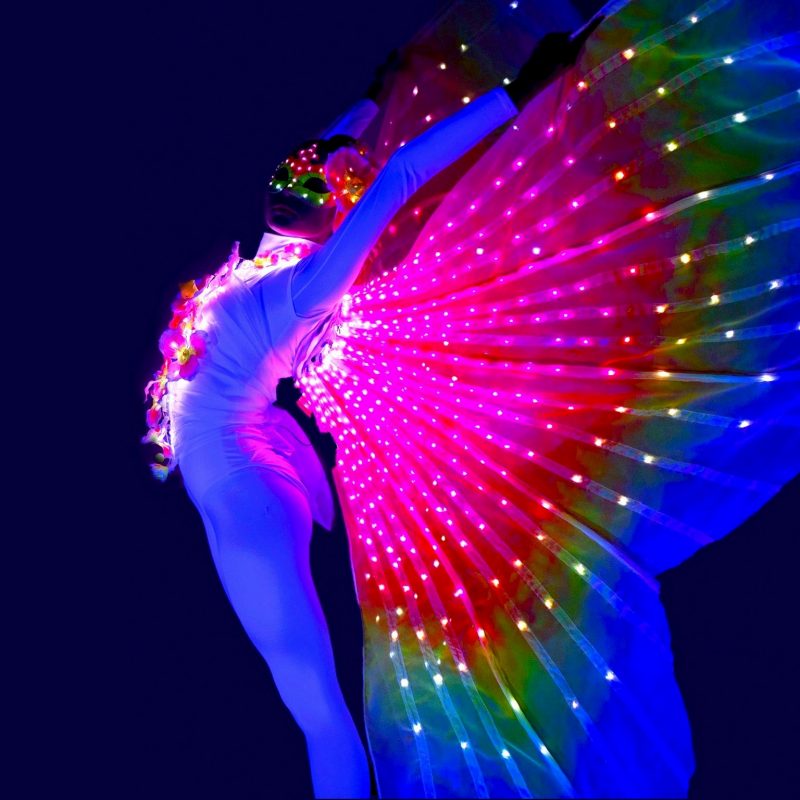 “It’s so simple,” she says. “Once they put the weight down and try to jump again, they’re going to feel really light.”
“It’s so simple,” she says. “Once they put the weight down and try to jump again, they’re going to feel really light.”
Courtesy Buffer
Breathe Through It
In order to steer dancers away from the “grippy” areas—clenched hands, tense jaw, held quads—that deter from a sense of lightness, Buffer works with her clients on breath control and core coordination. She sees gripping as a telltale sign of core weakness; since she believes that a good cardio-vascular system and a strong core go hand in hand, she focuses on breathing exercises that target the relationship between the pelvic floor and the diaphragm.
In one exercise, she’ll put a TheraBand around a dancer’s lower ribs, and cue them to expand their ribs on the inhale while consciously relaxing the pelvic floor. On the exhale, they’ll engage the pelvic floor and release the diaphragm. “It’s like watching paint dry, but it’s effective,” she says. “If someone has a better use of their breath and the pressure management of their body, that gives us a better sense of ease and lightness.”
“If someone has a better use of their breath and the pressure management of their body, that gives us a better sense of ease and lightness.”
Similarly, Reyes has seen some dancers try to achieve lightness by holding their breath and not using their pliés. Instead, she says, it’s the exhalation that allows for greater freedom. She gives her dancers mindfulness exercises to practice this quality. One has them visualize breathing in the energy of the earth and consciously feeling the sensation of their feet on the floor while feeling spacious. “You keep pulling the breath up, swirling it around, and use the power of your imagination to create a flow in energy, moving past the frozen spots in your body,” she says. “When dancers are using their breath onstage, you can feel yourself dancing with them. That easiness makes it feel like they’re riding a wave.”
Teachers:
For tips on helping your students find lightness, visit dance-teacher.com.
Learn About Lite Feet – The Newest Evolution in Hip Hop Dance.

If you’ve been to New York City recently, chances are you’ve already stumbled across Lite Feet – the newest evolution in Hip Hop dance.
Wanna learn more about Hip Hop in general? Check out: What is Hip Hop?
The underground movement has taken place, literally, underground, with cyphers, shows, and battles popping off in subway cars around the city.
Unlike singular street performers, young Lite Feet dancers gather to do more than entertain. There’s a sense of community, camaraderie, and EXPLOSIVE energy that you can feel in every performance.
Now, for the first time ever, you can learn to be just as explosive and hype as today’s Lite Feet dancers, with our new “Intro to Lite Feet” program taught by Mr. YouTube – one of the original creators of Lite Feet!
Read on to learn everything you need to know before starting your Lite Feet journey. 👇
The name “Lite Feet” refers to the (almost) weightless footwork that’s used in many of the foundational moves.
Some of the most popular moves include:
The Tone Wop
The Chicken Noodle Soup
And the Rev Up
Similar to Breaking, many of the moves are fast, high-energy, and athletic.
And since most of the moves were made to “wow” an audience, mind-blowing shoe tricks and hat tricks are also an integral part of Lite Feet’s vocabulary.
As the Lite Feet battle scene evolved, a move called the “Lock In” also emerged, which serves as an exclamation point that ends each routine.
For Mr. YouTube, sharing Lite Feet with the global dance community was always the dream.
And with our users and audience around the world asking to learn Lite Feet on STEEZY Studio, we knew it’d be the perfect partnership.
Here’s the scoop on how Mr. YouTube developed the ultimate beginner Lite Feet program on STEEZY, and his personal tips for getting started.
What do you want your students to learn from your Lite Feet program?
Lite Feet is freestyle-based, but we approached the program in an organized way so that you can understand the progression of the steps, the history of the culture, AND THE MUSIC! You gotta understand it all in order to dance with feeling.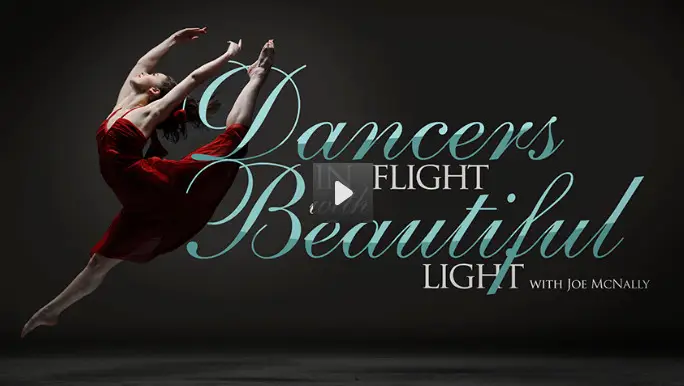 We can’t go back 15 years to the first few parties, but we can pass on the knowledge – organic and original.
We can’t go back 15 years to the first few parties, but we can pass on the knowledge – organic and original.
Since Lite Feet is freestyle-based, should new dancers start by focusing on technique? Or creativity?
I want all of the students to gravitate toward whatever they feel when they take this course. If they feel like they want to compete, they can dig into the techniques of the course and build those. If you’re a more casual dancer, you’ll get dope moves that you can pass off to others and just have fun with. I’m not just in one lane of dance – so I want my students to be able to do whatever they want with it!
How did you choose which moves to teach in the Lite Feet program?
Starting around 2004, there were a lot of party dances circulating that became the foundation for Lite Feet. I wanted to teach the core moves from that era cause they really sparked the movement – including some that I created myself.
Any tips for dancers who have never used STEEZY, but wanna try “Intro to Lite Feet”?
Yuh! STEEZY has a ton of features that you can use in all the classes.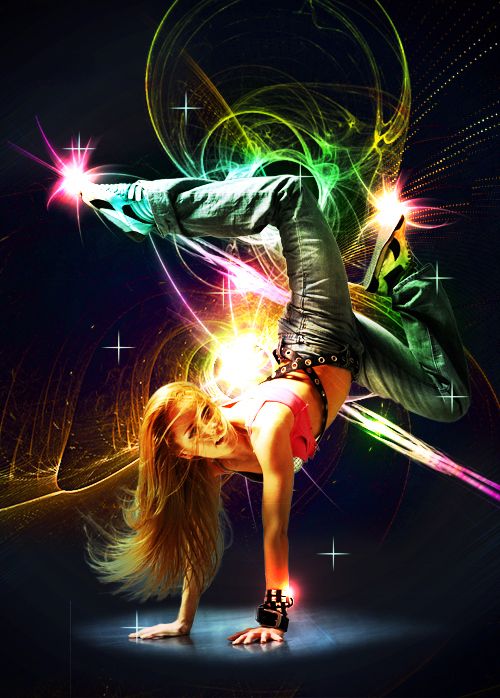 There are two cameras so you can watch from front or back. And you can play sections on loop while you practice. I’ve been doing this for 15 years and I still practice every day. Use the looping mode to drill each move in the program to really get it down.
There are two cameras so you can watch from front or back. And you can play sections on loop while you practice. I’ve been doing this for 15 years and I still practice every day. Use the looping mode to drill each move in the program to really get it down.
Once you master the moves technically, how can you add your own flavor?
When you hit a Lite Feet track, it makes you want to move. It’s fast, in your face, and has that groove. So you don’t have to worry about how you add your own character, you just need to focus on the music. If you connect with the song and just allow yourself to get down, your natural style will start to show itself over time.
Ready to start your Lite Feet training?
💥👣 Click here to start “Intro to Lite Feet” on STEEZY Studio 👣💥
How to learn to dance beautifully and correctly
Numerous dance shows, where masters demonstrate talents and skills, are very popular today. The actors move gracefully, which makes ordinary people far from choreography want to master the art of dance. But more often, the question of how to learn to dance beautifully is asked by those who want to feel lightness in the body. To do this, you need to follow a few guidelines.
The actors move gracefully, which makes ordinary people far from choreography want to master the art of dance. But more often, the question of how to learn to dance beautifully is asked by those who want to feel lightness in the body. To do this, you need to follow a few guidelines.
Moral training
Do not pay attention to the opinions of others. If you decide to dance, boldly go to the goal and do not be afraid of difficulties. The first time will be difficult both physically and psychologically, but these are only temporary problems. With each subsequent lesson, confidence and emancipation will begin to appear. These two components will help create a beautiful dance with precise and smooth movements.
Modern pole dancing is often equated with striptease, but this comparison is not entirely accurate. Pole dancing contributes to the loss of extra pounds, keeping the body in great shape. Striptease is more of just an erotic dance, designed to seduce, rather than correct the figure.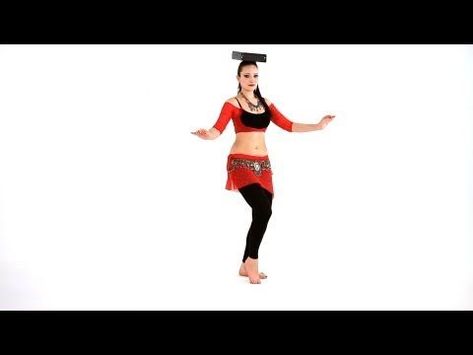 This difference is sometimes difficult to explain to people who are far from sports, but you know what you are striving for, so discard all doubts and do not forget about the result.
This difference is sometimes difficult to explain to people who are far from sports, but you know what you are striving for, so discard all doubts and do not forget about the result.
You can dance at any age. Feel free to be physically unprepared and don't criticize yourself for being clumsy. Over time, you will become plastic, you will be able to move beautifully in any dance, despite the style.
Choice of style direction
Pole dance gives the opportunity to improve the body
To enjoy dancing, it is important to choose a direction. Perhaps it will be Latin American or folk dances, paired or individual. Recently, modern options have been in demand, divided into several varieties:
- Pole Dance is a spectacular dance that combines acrobatic tricks and choreographic techniques. In the process, all muscle groups are trained.
- Exotic Dance is a feminine dance that focuses on artistry and "exotic" movements. Refers to a popular type of sports choreography.

- Booty Dance is a newfangled direction of sexy dances with movements of the buttocks.
- High Heels is a daring dance performed in high heels to the crisp rhythms of pop or house music.
- Booty Ballet is a kind of dance acrobatics combined with classical ballet elements.
Look for a style you like, watch videos on the Internet and choose a dance direction. The main thing is that you like it, you enjoy choreography. Then the question of how to learn how to dance beautifully will be half resolved.
Uniform for the best result
Comfortable uniform is the key to effective training
For a beautiful, graceful and easy dance, you need to choose a comfortable uniform and shoes. This is an important part on which freedom of movement depends. Some dances include special low-heeled shoes and a dress. Do sports dancing in leggings and a T-shirt. They are great for warming up before pole dancing because they disperse heat through the body, promoting weight loss.
Pole Dance, Exotic Dance and similar dance styles require the shortest possible shorts and tops. This form of clothing allows you to expose the skin, which will increase grip with the pole. Solid fabric suits or tights will not allow you to keep on the pole, because the material will slide on it.
Choice of activities: personal trainer or group?
Dance is usually taught in groups of several people. Some people like it. You can communicate with other students, look at them, analyze mistakes and not repeat them. But the choreographer does not pay much attention to each student.
Women often prefer individual lessons with a trainer. He will teach you how to perform the elements correctly, which will reduce the risk of injury. Lessons with a personal choreographer are suitable for shy girls who are unable to dance in a group where they think they are being watched by other students. In individual lessons, it is easy to loosen up and focus on the words of the coach.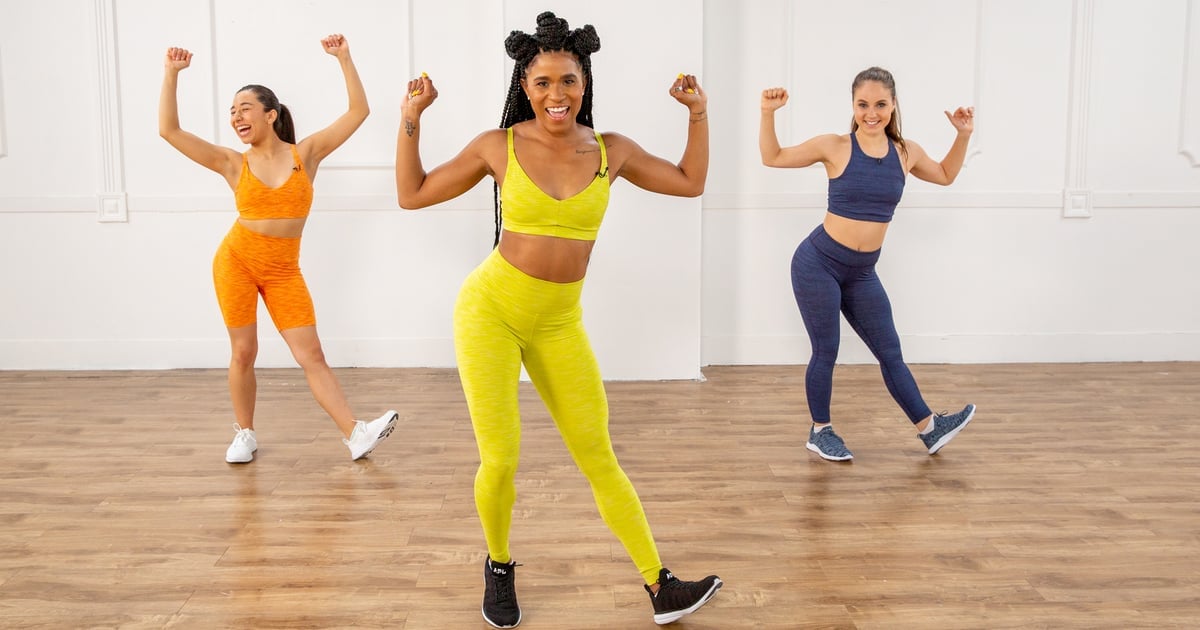 These are paramount tasks on the way to achieving the skills of a beautiful dance.
These are paramount tasks on the way to achieving the skills of a beautiful dance.
Stages and frequency of classes
Warm-up before class is an important element of training
The question of how to learn to dance beautifully worries those who want to master the basic movements. To do this, training sessions are carried out, consisting of the following parts:
- Warm-up. In the process, the muscles are warmed up - this will help to avoid sprains and injuries. It is better to perform simple exercises with energetic, invigorating music.
- Main stage. First, already learned elements are repeated, then new techniques are mastered. They are carefully worked out together with the choreographer, after which they are combined into a dance.
- Final stage. After repeating the movements, the rhythm slows down, the body relaxes, breathing is restored.
You should train at least every other day, and in between lessons it is better to rest more, allowing the muscles and the body as a whole to recover from the loads.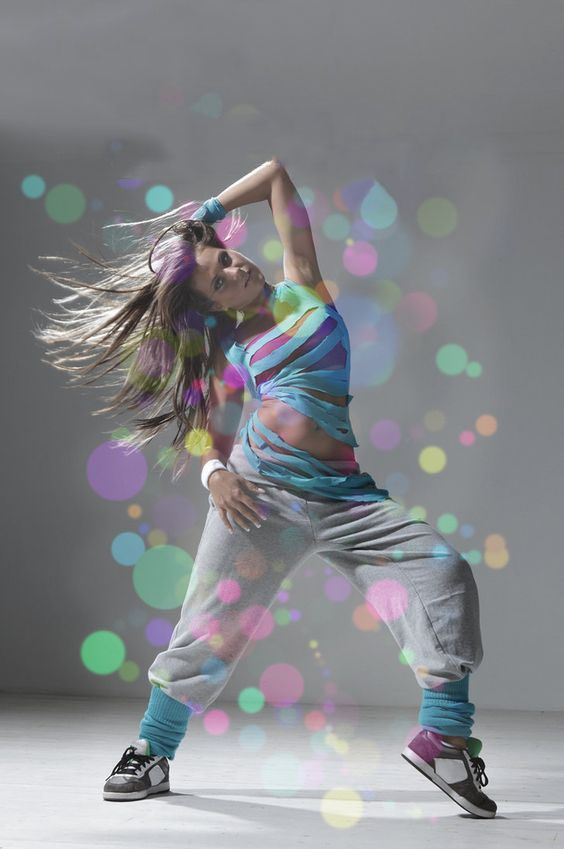
Beautiful dancing in Anix Dance
Dance Studio Anix Dance offers professional training in modern dances: Pole Dance, Booty Dance, Exotic Dance and other areas. Classes with experienced trainers will help you achieve quick results. In the process of dancing, all muscles are strengthened, which helps to increase endurance.
Our choreographers will teach you the art of beautiful and spectacular dance. You can sign up at the phone number listed here.
How to learn to dance? - hip hop video, modern dance, club dance lessons, dance lessons online video
Fears of beginners
I started dancing at the age of 11, with absolutely no inclination for it: a fat, sickly, pathologically shy child, completely devoid of physical training, but generously endowed with complexes and nervous tics. A couple of years later I took first place in the competition, and five more years later I performed on stage. I studied without fanaticism, and I didn’t have an incredible talent - I just got great pleasure and easily overcame the fears that definitely stop many of you:
Fear #1: “I have no hearing and no sense of rhythm.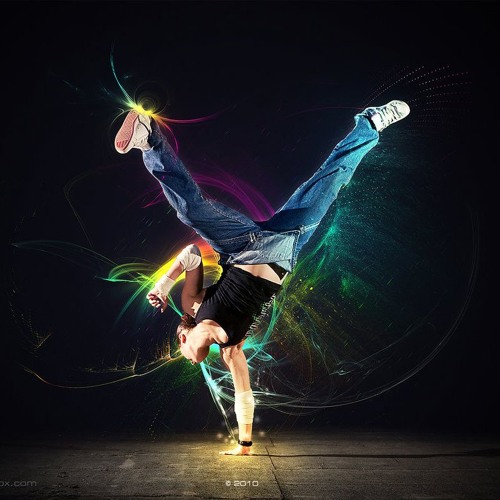 ” If you cannot distinguish the note E of the first octave from F of the second, I sympathize with you very much. You will never become an outstanding pianist. But as a dancer - easily: hearing has little effect on the speed of learning. The sense of rhythm is indeed very important, but it is perfectly developed with the help of dances, especially modern ones.
” If you cannot distinguish the note E of the first octave from F of the second, I sympathize with you very much. You will never become an outstanding pianist. But as a dancer - easily: hearing has little effect on the speed of learning. The sense of rhythm is indeed very important, but it is perfectly developed with the help of dances, especially modern ones.
Fear #2: " I'm too old." Again, age only matters if you want to become a professional dancer, and you are 10 years old (you need to start with 5-6). An amusing study conducted a year ago by the University of Hertfordshire found that dancers in their 40s are much more relaxed and confident than those in their twenties, and therefore learn quickly and easily. “There is nothing worse than a very young group,” says Anna Moiseeva, a teacher of classical choreography at the Tais school. “Everyone evaluates each other, terribly complexes and, as a result, quickly leaves the race.”
Fear #3: " I'll be the worst in the group. " I will reveal a terrible secret: adults with a similar lifestyle and without a sports and dance background have almost the same dancing abilities. “After only five or seven group sessions, some students jump ahead,” explains Maria Khmelnitskaya, a dance movement therapy specialist. - And all the rest continue to develop at about the same level. In a word, someone always discovers outstanding abilities, but very rarely there is a complete absence of them.
" I will reveal a terrible secret: adults with a similar lifestyle and without a sports and dance background have almost the same dancing abilities. “After only five or seven group sessions, some students jump ahead,” explains Maria Khmelnitskaya, a dance movement therapy specialist. - And all the rest continue to develop at about the same level. In a word, someone always discovers outstanding abilities, but very rarely there is a complete absence of them.
Fear #4: "Dancing is very expensive and troublesome." If you want to dance seriously and professionally, you will have to pay for master classes, concert costumes, travel to foreign festivals. But if the goal is only pleasure, then dancing is a very budgetary activity. Sometimes you need expensive professional shoes, but they will last a long time.
Five tips for those who want to learn to dance
So, we have dealt with fears, now let's act.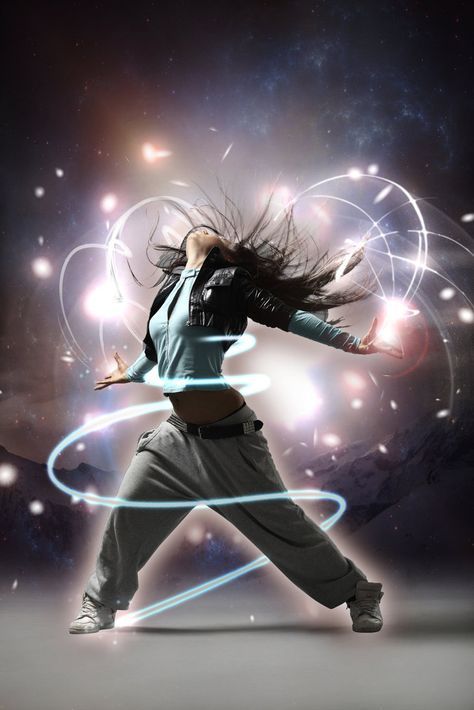 The first point here is predictable: get your butt off the couch. And then do five more simple things.
The first point here is predictable: get your butt off the couch. And then do five more simple things.
1 . Choose a style. Play instant associations (the exercise is described in the text "How to develop intuition"). Write “dance” on a piece of paper, and then five words that come to mind first. If it will be, for example, "sea, skirt, guitar, sun, passion," Latina will probably suit you. Be sure to read our program articles: "How Dancing Changes the Body", "Which Style of Dance to Choose", "The Influence of Dancing on the Psychological State of a Woman".
2. Don't delay because you can't find a school . You can start dancing at home, and do it fully. One of my acquaintances, the star of the Moscow flamenco scene, has never been to a “live” lesson in her life: she learned only from the video. Indian dances, hip-hop, belly dance, latin, modern club dances - choose and start.
3. Be beautiful. Regardless of where you study, in the studio or at home, you need to come to the first classes very smartly. You are not moving very gracefully yet, so you need to create a beautiful affirming picture on your own. No old T-shirts and leggings! If you dance Latina, put on a skirt and make up. For hip-hop - tight top and hat. I repeat: even at home, and especially at home.
You are not moving very gracefully yet, so you need to create a beautiful affirming picture on your own. No old T-shirts and leggings! If you dance Latina, put on a skirt and make up. For hip-hop - tight top and hat. I repeat: even at home, and especially at home.
4. Don't look for a partner. Even if you want to learn how to dance in pairs. Many do not dare to go to the hustle or tango because of the lack of friends and husbands. Firstly, at school they will help you with a couple. Secondly, you can dance without it. A great example is our Latina for Beginners, with which you can learn solo salsa (seemingly an oxymoron).
5. Dance for yourself. Almost any dance makes us socialize: make new acquaintances, go to discos, talk a lot and perform. On the one hand, it's great. On the other hand, this is what many are afraid of. Remember: you can not go to clubs, not drink tea with new friends after each workout. Do not tell your friends that you went to the dance, otherwise they will torture you with requests to “show something”.
